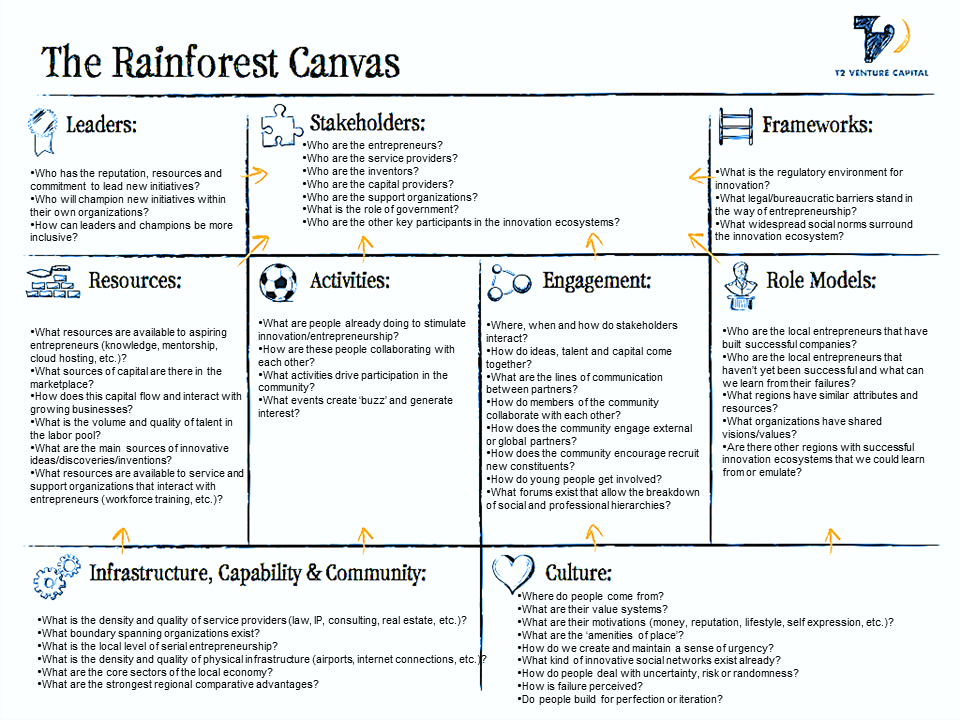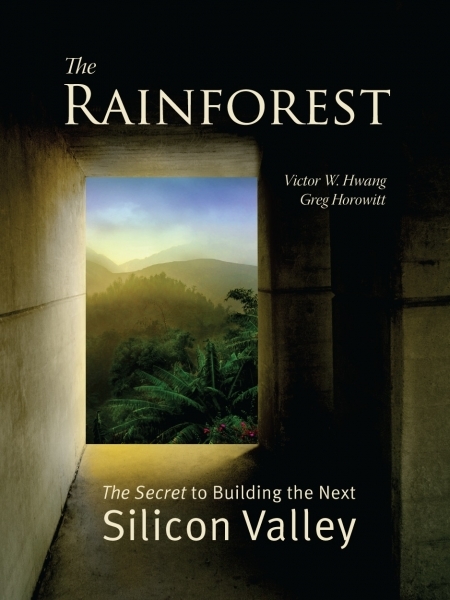After my initial notes (part I) and the importance of culture (part II) in the Rainforest by Hwang and Horowitt, here are my new notes about their recipe to build efficient ecosystems for entrepreneurial innovation. I will finish with a part IV about venture capital.
Again the authors remind us that “innovation is chaotic, serendipitous and uncontrollable, so processes that are linear and controlled are rarely self-sustaining. In contrast, what we strive for in a Rainforest is a system that yields immense impact, is low-cost, and generates internal sustainability. The only possible way to achieve these goals is to build a community of innovators where transaction costs have been reduced through the creation of trust, social norms, connectivity and diversity.” [Page 183]
So their recipe is not so much a recipe as a cure. In fact they say “rather than thinking like macroeconomists, to change behavior, we must think like psychiatrists […] We build rainforests by shaping the outward behavior of innovators. Over time, those behaviors can create changes in attitude, and eventually, the changes in attitude can lead to change in beliefs”. [Page 200-1]
In the recipe [pages 194-200], there is Hardware made of 4 “P”s: People, Professional, (i.e. institutions), Physical (i.e. infrastructure) and Policy. Hardware is necessary but not sufficient. There is also Software, with 5 pillars, Diversity, Extra-Rational Motivations, Social Trust, Rules (see my previous post) and Interpretation of the Rules. The Keystones will make all this possible.
The Rainforest canvas may be a helpful tool to assess the situation of an ecosystem in its physical and cultural components:

About Role Models, they have the interesting Porsche principle. “This principle holds that one of the greatest motivators for professors or graduate students on campus to start new companies is when one of their colleagues drives up in a new Porsche after selling their startup”. [Page 210] To be honest, today, at EPFL and probably elsewhere, I would call it the Tesla principle… (see my previous post…The University-based Startup Porsche Principle. Or is it the Tesla Principle?)
In their epilogue, the authors explain that “Perhaps, instead of fighting the chaos, we need to become more comfortable with it. Perhaps we just need a better map. The Rules of the Rainforest provide a useful map – one that shows the way to balance the freedom of chaos with the beauty of collaboration. […] It requires a ‘joyful participation’ in the ups and downs, the mistakes and the failures that are inevitable. Thus, love is like a solution to chaos. ” [page 280] They use a magnificent quotation from Richard Feynman to whom a student asked to write a message to his mother so that she would be interested in science. Here it is: “Tell your son to stop trying to fill your head with science – for to fill your hear with love is enough. Richard Feynman (the man you watched on BBC ‘Horizon'”.
Here is a slideshare presentation by the authors, which beautifully summarizes their vision.

